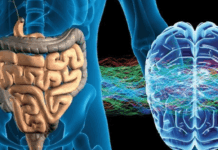
Vaccine Boom, Population Bust
Study queries the link between HPV vaccine and soaring infertility
by Celeste McGovern
Children’s Medical Safety Research Institute
A plague is spreading silently across the globe. The young generation in America, the United Kingdom, France, Italy, Japan, Australia – in virtually every western country — is afflicted by rapidly increasing rates of infertility.
This spring, the United States reported its lowest birth rate in 30 years, despite an economic boom. Finland’s birth rate plummeted to a low not seen in 150 years. Russian President Vladimir Putin recently introduced a string of reforms aimed at stemming the country’s “deep demographic declines.”
The government of Denmark introduced an ad campaign to encourage couples to “Do it for Denmark” and conceive on vacations, and Poland produced a campaign urging its citizens to “breed like rabbits.”
The “population bomb” we were all endlessly warned about by environmentalists failed to blow, and instead, demographers have been trying to raise the alarm about the population implosion crisis unfolding across the West — the graying of societies facing an unprecedented aging demographic in which there will be too few young to support the old.
Most often, they blame social factors: young women embracing careers instead of motherhood, men shunning marriage and fatherhood, rising consumerism or couples choosing to delay raising a family until the economy settles. But there is another phenomenon that is rarely mentioned – the growing numbers of young people who are not childless by choice but who are incapable of bearing children.
The Centers for Disease Control reports that more than 12 percent of American women – one in eight—have trouble conceiving and bearing a child. Male fertility is plunging, too, and the trend is global.
Something – or things — are robbing young women and men of their capacity to procreate and public health admits it doesn’t have a clue where to start to fix the emerging priority. Besides bantering about expanding access to costly and risky artificial reproductive technologies, very little is being done to discern the cause of the rising infertility crisis.
So, earlier this month, when an unprecedented study was released that looked at a database of more than eight million American women and singled out a whopping 25 percent increase in childlessness associated with one ubiquitous drug that young women have been taking for only a decade — in tandem with a marked decline in fecundity — you would have thought there would be significant interest from public health, the medical profession and the media, wouldn’t you?
A Common Denominator Behind Growing Infertility Rates
Instead, all three of these behemoths remain stone silent.
The reason? Because the study, published in the current Journal of Toxicology and Environmental Health, examines the childbearing capacity of women who received the human papilloma virus (HPV) vaccine – compared to those who didn’t — and the results are chilling.
No one in public health, medicine or mainstream media, which are tangled up in the money-making machine of this vaccine, dare to publicly question the “safe and effective” mantra they’ve promulgated about Merck and GSK pharmaceuticals’ “blockbuster” commodity worth billions.
The study is by Gayle DeLong, associate professor of economics and finance, at Baruch College at City University of New York. She observed that the declining birth rate had plunged in America in recent years – from 118 per 1,000 in 2007, to 105 in 2015 for the cohort aged 25 to 29.
The HPV vaccine was approved by the Food and Drug Administration for use in the US in 2006 to prevent cervical cancer – an illness women face a 0.6% lifetime risk of being diagnosed with. Although it is diagnosed most frequently at age 47 in the United States, it was rolled out en masse, initially targeting girls aged 11 to 26 (and has since been marketed to boys as young as nine to prevent rare anal and penile cancers — a disease that afflicts 0.2 % of men in their lifetime.).
DeLong had read a case study in the British Medical Journal by Australian physicians Deirdre Little and Harvey Ward, who described a 16-year-old girl whose regular menstruation ceased after receiving HPV vaccinations and she was diagnosed with premature ovarian failure.
In 2014, the doctors published a case series of more teens who had entered premature menopause — a phenomenon Little and Ward described as ordinarily “so rare as to be also unknown.”
They raised troubling questions about some vaccine ingredients’ documented impact on reproduction, cited serious deficiencies (some would say criminal negligence) in preliminary vaccine trials and concluded that further research was “urgently required….for the purposes of population health and public vaccine confidence.”
 As well, between 2006 and 2014, the Vaccine Adverse Event Reporting System (VAERS) cited 48 cases of ovarian damage associated with autoimmune reactions in HPV vaccine recipients. Between 2006 and May, 2018, VAERS catalogued other reproductive issues: spontaneous abortion (256 cases), amenorrhea (172 cases), and irregular menstruation (172 cases), all of which are likely under-reported symptoms.
As well, between 2006 and 2014, the Vaccine Adverse Event Reporting System (VAERS) cited 48 cases of ovarian damage associated with autoimmune reactions in HPV vaccine recipients. Between 2006 and May, 2018, VAERS catalogued other reproductive issues: spontaneous abortion (256 cases), amenorrhea (172 cases), and irregular menstruation (172 cases), all of which are likely under-reported symptoms.
All of this intrigued DeLong, who has followed the vaccine debate for years and makes no secret of the fact that she has two daughters, 18 and 21, both having been diagnosed on the autism spectrum, whom she saw regress developmentally and withdraw following vaccinations early in life. “I am sceptical of vaccine science and the safety studies that are done, or not done,” she says.
She set out to analyze information gathered in the National Health and Nutrition Examination Survey (NHANES), which represented 8 million 25-to-29-year-old women living in the United States between 2007 and 2014. Using logistic regression, she matched the young women for other variables, including age, and compared pregnancy as an outcome in those who received an HPV vaccine compared with those who did not get any of the shots.
“I just wanted to see if there was an issue,” says DeLong. “I certainly didn’t expect to find such a strong association.”
Approximately 60% of women who did not receive the HPV vaccine had been pregnant at least once compared to just 35% of women who had had an HPV shot had ever conceived.
For married women, the gap was also about 25%: 75% who did not receive the shot were found to have conceived, while only 50% who received the vaccine had ever been pregnant.
“Results suggest that females who received the HPV shot were less likely to have ever been pregnant than women in the same age group who did not receive the shot,” the study says.
It concludes, as all studies like this do, that the data points to an association, not causation, between the new vaccine and reduced fertility but that further study is warranted.
If the association is causation, however, DeLong’s math suggests that if all the females in this study had received the HPV vaccine, the number of women having ever conceived would have fallen by two million.
That’s not two million missing children. That’s two million women who can’t conceive one, two, or any children.
It is millions of American children missing from a single cohort. The implication, considering the sweeping breadth of the global HPV vaccine campaign targeted now at both males and females aged nine-years-old and up, is staggering.
The Skeptic Response
Skeptics are reliable vaccine industry defenders. Armchair scientists who frequently hide behind pseudonyms, they have sort of schizophrenia about vaccines. They insist vaccines are powerfully immune-modulating drugs capable of altering the immune system’s response to infectious exposure.
But they can’t accept that, like all drugs, vaccines can and do have thousands of documented long-term adverse reactions — especially because they are designed to induce the delayed manufacture of antibodies by the adaptive immune system. Because these responses are mediated by the immune system, they are diverse, unpredictable and profound. As expected, the Skeptics welcomed DeLong’s research with snide and personal (read unscientific) attacks.
They slammed her failure to include data on contraceptive use. As a result, DeLong intends to attach that data to an addendum on the study, but what she found and reported on Age of Autism’s website only bolsters the study’s findings.
Among married women in the survey, 36.6 % of those who had received the HPV shot told the NHANES that they were using contraception (condoms at least half the time, birth control or injectables otherwise) compared to more than half (51.5%) of those who didn’t get the shot – a difference of almost 15%.
Less contraceptive use should translate to more babies among the vaccinated. But, it seems that the vaccinated women in the study were actually trying harder to conceive (or at least not so worried about it) but still having less luck – not good for the Skeptic argument.
DeLong “isn’t even an epidemiologist” the Skeptics howled. (In other words, shoot the messenger if you don’t like the message.) To which she replies, “No. I’m not. I am a statistician, however. I would be grateful if epidemiologists would do their job and conduct this research thoroughly.”
This is precisely what her study called for. If they did, mothers of vaccine injured children would not be required to.
Infertile Women Excluded From Study on Infertility
DeLong cites another study, from Boston University’s Schools of Public Health and Medicine and the Research Triangle Institute (RTI) in North Carolina, which found no such association between HPV vaccination and impaired fertility.
Interestingly, Boston University has been the recipient of tens of millions from globalist vaccine promoters Bill and Melinda Gates Foundation, as has RTI, an organization that has received more than $47 million dollars in grant fundsin recent years. RTI has published a number of recent studies on HPV vaccine, including one jointly-funded with GSK (a vaccine manufacturer) on the safety of the company’s HPV vaccine, and another, cautioning public health agencies to “take special measures to ensure their messages are not perceived as sponsored by drug companies” lest they incite “reduced liking and trust” by parents who will be less likely to give the HPV vaccine to their sons.
Other RTI publications describe “Promising alternative settings for HPV vaccination of US adolescents,” changing “provider behavior” to enhance HPV uptake and more.
The RTI study about HPV vaccine’s impact on fertility was based on patients’ own recall of vaccines received (remember how the Skeptics howled at self-reporting before?).
But the study did not control for a far more important factor in fertility – age. Age in this context affects not just the possible effect of the vaccine itself on fertility, but fertility is skewed dramatically in favor of the young and the study lumps 18 year-olds in with 30-year-olds.
As well, at the outset, it excludes 881 women from a pool of 5,020 because they were already trying – without luck – to conceive a baby for more than six months. This has the effect of shrinking the infertility finding overall.
“These could be the women with ‘hard core’ issues of fecundity,” says DeLong, “but they are precisely the women who should be included.”
Environmental Concerns
To be sure, many environmental factors could be affecting female fertility. Plunging male fertility is one of them. Male sperm counts have nosedived in recent decades – scientists published data last year showing that globally, they have dropped 50 percent in just the past 40 years – signalling serious unidentified environmental hazards.
Environmental scientists have pointed to everything from GMOs and toxic aluminum (more on this later) to Wi-Fi and birth control excreted by women into the drinking water, as possible causes of vanishing sperm and lowered fertility generally.
But in DeLong’s study, these environmental factors influence the whole group of women equally. There is no reason why women who vaccinate would choose men with lower sperm counts, for example.
What’s in the HPV Vaccine?
So, what is it about a vaccine targeting a virus associated with cancer of the human reproductive tract that could go so wrong?
DeLong notes that both HPV vaccines contain aluminum, a toxic metal with documented potential to induce autoimmune self-attack, including on reproductive organs.
HPV vaccines are loaded with aluminum: Merck’s original Gardasil vaccine contained 225 micrograms of nanoparticlized aluminum in each of three shots, totalling 675 micrograms; the “new improved” Gardasil 9 shots contain a total of 1500 micrograms – a wallop of stimulant for the immune system that DeLong thinks might just be “a tipping point” for youths who have had so many previous injections of aluminum in the schedule of 50 vaccines before school age.
Perhaps this is why HPV shots have such a high number of reported adverse events: 45,277 from its introduction in 2006 to May, 2018 (and these are considered to be vastly under-reported). The CDC states that all these reactions are normal and that HPV vaccines are safe without any adverse impact on maternal or fetal outcome in pregnancy.
A recent paper from Texas Tech University Health Sciences Center cautions that this CDC assurance is based on incomplete data.
It points out biases in reporting and gaps in data.
“Certain adverse effects of the vaccine against HPV that have not been well studied as they are not well defined,” add the researchers who describe a host of documented, diverse autoimmune, neurological and cardiovascular disease in the wake of the vaccine.
The most frequent reported symptoms after HPV vaccination are poorly understood – fainting, chronic pain with tingling or burning sensations, headaches, fatigue, and dizziness, nausea and other symptoms that are worsened on standing upright, for example.
HPV vaccination – as well as tetanus vaccination – has been linked in medical literature to a condition called anti-phospholipid syndrome, which is a poorly defined disease caused when the immune system erroneously manufactures antibodies against certain lipid proteins found in membranes that are in a host of tissues — eyes, heart, brain, nerves, skin – and the reproductive system.
One 2012 study by Serbian researchers at the Institute for Virology, Vaccines and Ser “Torlak” found that “hyperimmunisation” of the immune system with different adjuvants, including aluminum, in mice, resulted in induction of antiphospholipid syndrome and the tandem lowering of fertility.
Other research has implicated aluminum in conception problems. French infertility researcher, Jean-Philippe Klein, and his colleagues at the University of Lyon published the results of their 2014 study of the sperm of men seeking assistance at a French infertility clinic.
They dispatched semen samples from 62 men who were having infertility issues to Christopher Exley’s aluminum research laboratory at Keele University in England where they were fluorescently stained to show the aluminum content as a luminescent blue. “Unequivocal evidence” of high concentrations of the metal were found, especially in the semen of men with low sperm counts.
Clearly fluorescing and concentrated aluminum in the DNA-rich heads of the sperm led the researchers to speculate about what impact this may have on the ability to procreate and on the development of newly formed embryos.

The aluminum in DNA-rich sperm heads is stained blue by lumogallion.
Deirdre Little, the Australian GP who documented primary ovarian failure following HPV vaccination, has also criticized the fact that Merck’s product information was misleading about what sort of “saline” placebo was used in trials of the Gardasil vaccine – it failed to mention that the “placebos” contained both the high doses of aluminium as well as another scary ingredient, polysorbate 80.
This chemical has exhibited delayed ovarian toxicity to rat ovaries at all injected doses tested over a tenfold range.
None of the trials accurately assessed the long-term impact of the vaccine on the reproductive health of girls, Deirdre and Ward said, adding that drug damage to reproductive health may take years or decades to manifest.
Urgent and Unanswered Questions
The elephant in the room that no one wants to talk about is why the HPV vaccine is so heavily marketed to begin with? Why make a vaccine for a disease that afflicts less than 0.3% of people in their lifetime?
And why include ingredients that are toxic, especially high doses of ingredients that scientists have objected to, and with documented toxicity to reproductive organs? Why not use a true control in the trials? What kind of scientist would do that kind of science? What kind of public health agency brushes off 45,277 reports of adverse events – including neurological and reproductive symptoms — among young women of childbearing age?
Answering these questions turns out to be a lot more awkward than it seems at first. There are chilling facts that are hard to set aside.
There are, as recently as 2015, the charges by Catholic bishops and human rights activists that public health agencies had deliberately tainted tetanus vaccines given only to women of reproductive age in Kenya.
Public health organizations denied they had laced tetanus vaccines with miscarriage-inducing Beta human chorionic gonadotropin (b-HCG) – a key sterilizing ingredient described in the extensive medical literature about the quest for a contraceptive vaccineto control population growth. The Kenyan bishops insisted they had laboratory evidence that was ignored and the issue was ignored like DeLong’s study.
Another inconvenient truth is that the very people funding the HPV vaccine juggernaut are the same people most interested in reducing birth rates.
When Melinda Gates launched her Family Planning Summit in 2012, with the objective of bringing contraceptives to the world’s poor, it was clear she had one measure for that goal in mind:
“If you see what’s happened in other countries that have had contraceptives, they use them first of all and the birth rates go down,” she said at the time. “The question is could it have come down even more quickly?”
Although she swore her campaign was “not about population control,” Gates’ goals are the same as those who conducted the mass sterilizations of Indian men on railway platforms in the 70s and who continue to sterilize Indian women today en masse to get the birth rate down.
For Gates, success is not measured in access to clean water or energy or in the development of infrastructure or political freedom, it is measured in access to drugs, drugs she and her husband hold stock in: contraceptives and vaccines. Their success is measured by exporting what most western countries are facing as social catastrophe: demographic decline.
So long as there is no satisfactory answer as to why the West is facing an infertility crisis, questions about the long-term impact of the HPV vaccine on human fertility are not only fair and reasonable, but the future is very bleak if we do not answer them.
Read the full article at the Children’s Medical Safety Research Institute.
The Children’s Medical Safety Research Institute (CMSRI) is a medical and scientific collaborative established to provide research funding for independent studies on causal factors underlying the chronic disease and disability epidemic.
Disclaimer: We at Prepare for Change (PFC) bring you information that is not offered by the mainstream news, and therefore may seem controversial. The opinions, views, statements, and/or information we present are not necessarily promoted, endorsed, espoused, or agreed to by Prepare for Change, its leadership Council, members, those who work with PFC, or those who read its content. However, they are hopefully provocative. Please use discernment! Use logical thinking, your own intuition and your own connection with Source, Spirit and Natural Laws to help you determine what is true and what is not. By sharing information and seeding dialogue, it is our goal to raise consciousness and awareness of higher truths to free us from enslavement of the matrix in this material realm.
 EN
EN FR
FR

























